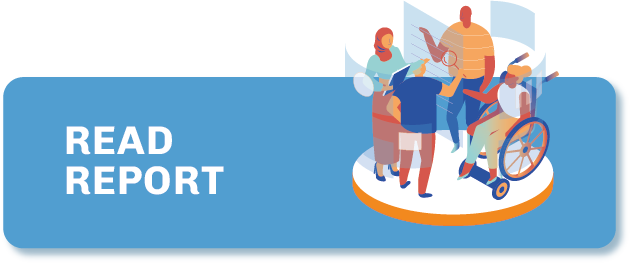Switzerland
Due to its strong cultural diversity and a distinctly federalist political system with four official languages, the Swiss media landscape is small and fragmented. As a reaction to financial difficulties in the media sector, growing ownership concentration and, consequently, a decrease in media pluralism over the past 20 years, new media organisations have challenged traditional outlets and tried to serve as more independent monitors of power. While digitally native media organisations produce strong journalistic content for broad as well as niche audiences, experiment with innovative and interactive approaches, and get support from their audiences, financial viability remains a challenge.
Media organisations
in the Directory
TYPE OF COVERAGE

TYPE OF ORGANISATION

GENDER OF FOUNDERS

Press freedom
Freedom of the press is well protected overall in Switzerland. However, in recent years, some legislation and sectoral trends have raised concerns among human rights defenders and media professionals. In May 2022, the parliament voted in favour of a revision of the Swiss Code of Civil Procedure, toughening provisional measures that may be used to suspend or stop undesired reporting. Earlier, in March 2022, the United Nations Special Rapporteur on the Promotion and Protection of the Right to Freedom of Opinion and Expression expressed concern about the impact of current banking laws on journalistic investigations. According to article 47 of the law, journalists and whistleblowers who disclose a bank’s client data could face up to five years in prison, as noted in an official statement by the UN. Furthermore, the enduring economic crisis experienced by print publishers in particular has led to downsizing, merging newsrooms and selling shares to major media conglomerates, thereby threatening media diversity and independence.
Market structure and dominance
The small and dispersed Swiss media market is characterised by the dominating role of the state-subsidised but editorially independent broadcaster Swiss Broadcasting Corporation SRG SSR, on the one hand, and a variety of private traditional and digital media outlets, on the other. In light of the culturally diverse and federalist context, Swiss media outlets primarily target linguistically defined local, regional or national audiences, but may also reach audiences abroad. A unique position is occupied by the public broadcaster SRG SSR, whose multilingual television, radio and online offerings remain the primary news source and hold a high trust legacy, according to the Reuters Institute for the Study of Journalism’s Digital News Report 2022. In the face of a significant decline in the print sector and growing ownership concentration, both major incumbent publishing houses, as well as new independent media outlets, have seized the opportunities of digitalisation and driven innovation in journalism.
How media is funded
State subsidies for the media have been the subject of a long and heated debate in Switzerland. The long-established funding for public broadcaster SRG SSR was reaffirmed in March 2018, when Swiss voters rejected the No Billag initiative to eliminate radio and television licence fees accounting for 80% of the public media organisation’s revenue. Indirectly, private print media outlets also benefit from subsidies reducing the cost of newspaper and magazine delivery.
Despite high economic pressure in the sector, losses in advertising revenue, a decline in subscription numbers and fierce competition with global platforms, a bill proposing an increase in licence fees and state aid for private media organisations was rejected in a referendum in February 2022. In this context, while most print media publications continue working with mixed business models based on advertising and subscriptions, digital media outlets experiment with “freemium” and voluntary membership offers. By increasingly choosing non-profit models and sourcing revenue through audience support and philanthropic grants, digital media outlets aim to improve and secure independence, and therefore willingly commit to a high degree of financial transparency.
Fourteen profiles of digital native media organisations from Switzerland are included in the directory. This includes six profiles based on interviews and eight profiles based on desk research.
The internet and the expansion of social media platforms introduced an irreversible transformation of the Swiss media landscape, and digital news outlets have overtaken print and broadcast as the main sources of news, according to the Reuters Institute’s report. As major private publishers are heavily invested in the digital media industry, the trends of commercialisation, concentration and convergence may also be observed in online news, notes Media Landscapes analysis.
In response to these trends, many independent digital media outlets express an ambition to close news gaps, offer critical and high-quality journalism and act as watchdogs. A dynamic independent digital media sector started growing around the turn of the millennium and saw a significant upturn over the past 10 years, with numerous – mostly German-speaking – initiatives challenging established media organisations.
As political decision-making takes place at local and regional levels where media concentration is high, several digital media outlets such as Bajour, Tsüri and Zentralplus aim to provide citizens with independent news, as well as with spaces for critical voices and debate. Others (for example the outlets Das Lamm, FRIDA and so on) are motivated by producing and publishing specialised journalistic content, addressing underrepresented audiences or underreported topics.
A common feature that may be observed among digital native media organisations is that their primary platforms are websites, accompanied by at least one newsletter and an active presence on social media. Most digital-first media outlets work with “freemium” offers and various forms of audience support, including donations and “pay what you can” memberships. Advertising revenue is rare, but event sponsorship has proven lucrative for some. Although some independent digital-first media outlets have now existed and innovated for a long time and have developed solid revenue models, the strong personal investment and outstanding involvement of volunteers, recent media closures (for example that of Higgs in 2022) and the lack of state aid for online media outlets are reminders of the remaining challenges in making digital-first journalism sustainable.
The digital media sector in Switzerland – the German-speaking ecosystem in particular – is dynamic and inspiring, because it reflects both media professionals’ ambitions to explore alternative ways of doing journalism, and audiences’ interest in investing in quality content and innovative formats. By virtue of their conviction and personal involvement, several digital-first media outlets have made a significant contribution to the country’s media landscape, especially with regard to local news, underrepresented topics and underserved audiences. Since most digital media organisations are continuously looking to calibrate and optimise their revenue models, it might be interesting to foster peer-to-peer exchanges, allowing them to speak about failures, share good practices and provide support in difficult times.
Last updated: January 2023
CREDIT FOR STATISTICS: Press Freedom statistics, RSF Press Freedom Index 2022; Internet penetration and population statistics, from Internet World Stats

